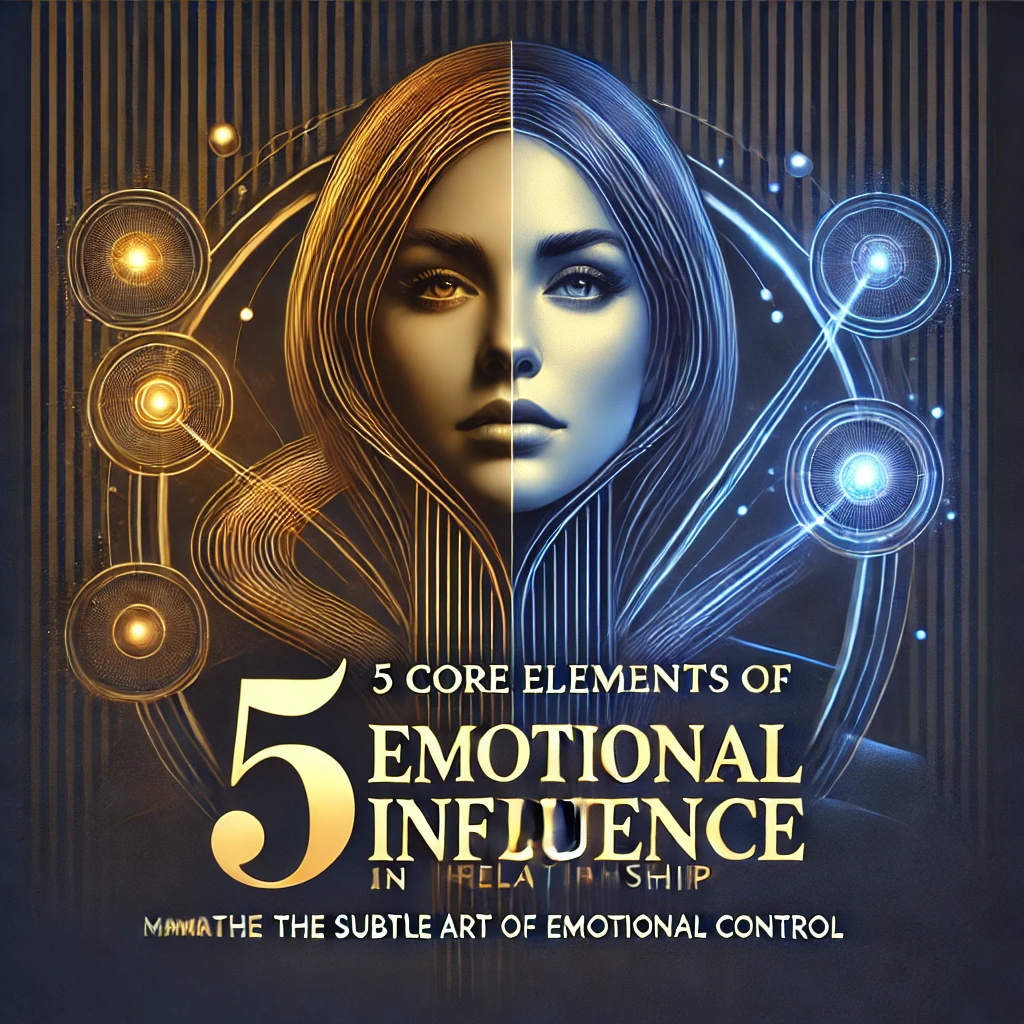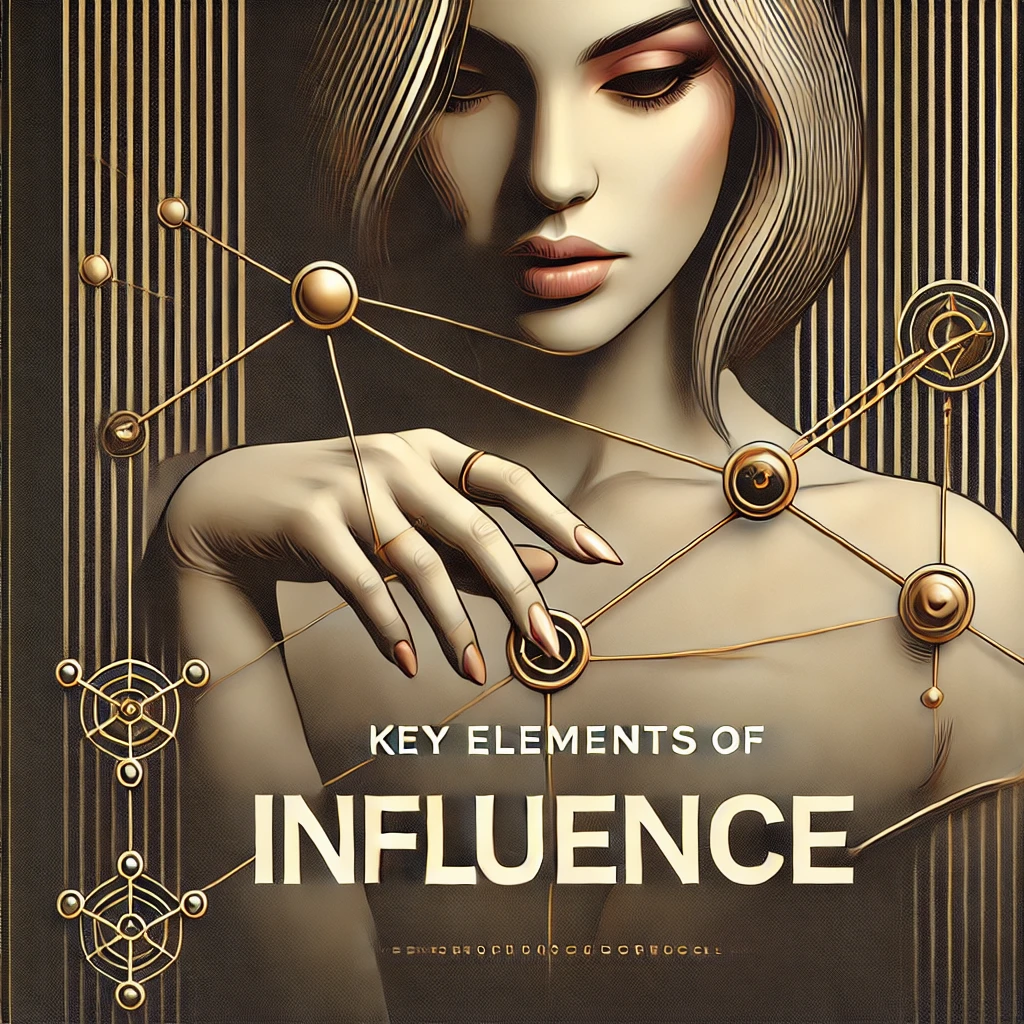They say the strongest weapon in any relationship isn’t what you say or do—it’s how you make the other person feel. In Chapter 4 of “Mastering Him: The Secret Art of Gentle Control in Relationships” the book breaks down how emotional influence works as the key to shaping a relationship without ever raising your voice or making demands. Forget the old-school advice about compromise and communication. This chapter is about using emotional intelligence to quietly—and powerfully—control the dynamic of your relationship in your favor.
So let’s get real for a minute. Influence isn’t just about dropping hints or nudging your partner in a certain direction. Real influence is about mastering their emotions, guiding them through subtle emotional cues that are so natural, they don’t even realize they’re being influenced. Emotional influence is not manipulation in the toxic sense; it’s psychological mastery. In Chapter 4, the book pulls back the curtain on how emotional influence works—and how you can use it to steer your partner’s behavior while keeping the peace.
What Is Emotional Influence, and Why Does It Work?
Emotional influence works because people are driven more by their feelings than by logic. You can present all the facts in the world, but if your partner doesn’t feel a certain way about something, those facts don’t matter. In Chapter 4, “Mastering Him” outlines how emotional influence taps into this truth and uses emotions as the lever to quietly steer your partner without confrontation.
What does this mean in practice? It means using the core elements of emotional influence to shape your partner’s behavior, from small decisions to bigger commitments, all while making them feel like they’re in control. It’s the kind of influence that’s so subtle, so well-crafted, that they’ll never see it coming.
The Core Elements of Emotional Influence
So, what are the core elements of emotional influence, and how do they work? Chapter 4 of “Mastering Him” identifies several key elements that make emotional influence effective, and they’re all about understanding and shaping how your partner feels.
1. Empathy as Leverage
Why It Works: Empathy isn’t just about understanding your partner’s emotions—it’s about using that understanding to your advantage. By tuning into their feelings, you can subtly guide their emotional state in ways that make them more receptive to your influence.
How to Use It: Empathy allows you to gauge when your partner is emotionally vulnerable, defensive, or open. For example, when your partner is feeling proud or successful, that’s the perfect time to introduce suggestions or requests. They’re more likely to agree when they’re emotionally uplifted, feeling good about themselves. Use their positive emotions as leverage to steer the relationship where you want it to go.
2. Timing Is Everything
Why It Works: Emotional influence relies on impeccable timing. Knowing when to make suggestions, requests, or simply remain quiet is crucial. The best influence happens when your partner is emotionally open to it—when they feel valued, heard, and understood.
How to Use It: Let’s say you want your partner to prioritize something you care about, like spending more time together or committing to a decision. Instead of bringing it up when they’re stressed or distracted, wait until they’re emotionally connected to you—after a great date, during a quiet moment, or when they’ve just received good news. Timing is everything when it comes to getting what you want.
3. Creating Emotional Reciprocity
Why It Works: Emotional reciprocity is the idea that when you make your partner feel good emotionally, they’re more likely to give back to you. It’s a subtle but powerful element of influence, where you create emotional exchanges that encourage your partner to meet your needs.
How to Use It: Compliments, appreciation, and acts of kindness are your tools here. Make your partner feel valued and appreciated, and they’ll feel compelled to return the favor by meeting your requests or going along with your suggestions. Emotional reciprocity works because it taps into your partner’s desire to maintain balance in the relationship.
4. Shaping the Emotional Environment
Why It Works: Emotional influence is about controlling the atmosphere of your relationship. If the emotional environment feels safe, positive, and affirming, your partner is more likely to be influenced in ways that align with your goals.
How to Use It: You can create the right emotional environment by managing your reactions, staying calm in difficult moments, and reinforcing positive emotional connections. When the emotional space feels good, your partner will naturally want to keep it that way—and that means agreeing with you more often than not.
5. The Power of Silence and Non-Reaction
Why It Works: Sometimes, the best influence happens when you say nothing at all. Silence can be a powerful tool in emotional influence. It allows your partner to reflect, consider, and ultimately, come to conclusions on their own—conclusions you’ve subtly guided them toward without uttering a word.
How to Use It: The next time you feel the need to argue or push your point, try silence instead. Give your partner the space to think. Often, they’ll come around to your side simply because the emotional pressure has been removed. Silence creates space for influence without confrontation.
The Ethical Debate: Influence vs. Manipulation
Let’s get controversial for a moment. Some people will argue that emotional influence is just another form of manipulation. But here’s the truth: influence is happening in every relationship, whether you’re aware of it or not. The difference is how you use it.
Emotional influence, as discussed in Chapter 4, isn’t about coercion. It’s about guiding the emotional atmosphere of the relationship to create outcomes that benefit both partners. And yes, it’s a subtle form of control—but control isn’t inherently bad. The key is using it to strengthen the relationship, not erode it. Influence that builds trust, creates harmony, and fulfills both partners’ needs? That’s what emotional intelligence is all about.
Why Emotional Influence Is the Ultimate Power Move?
By mastering emotional influence, you hold the quiet power in the relationship. You’re not forcing outcomes; you’re guiding them. You’re not manipulating emotions; you’re shaping the emotional space in ways that lead to mutual benefit. “Mastering Him” doesn’t just teach you how to influence—it shows you how to master the emotional dynamic of your relationship, so you always have the upper hand, without the conflict or push back.
Q&A:
- What is emotional influence, and how can it help in relationships?
Emotional influence is about subtly guiding your partner’s feelings to create positive relationship dynamics. By understanding their emotions and timing your interactions thoughtfully, you can shape the relationship without conflict or pressure. - How does empathy play a role in influencing my partner?
Empathy allows you to tune into your partner’s emotions, which can make them feel understood and valued. When your partner feels deeply connected to you, they’re more likely to be receptive to your needs and suggestions, creating a natural flow of influence. - How can timing impact influence in a relationship?
Timing is crucial. The best influence happens when your partner feels emotionally open, such as after a positive experience together. Bringing up suggestions when they’re in a good mood makes them more likely to agree and cooperate without resistance. - What is emotional reciprocity, and how can it be used to influence my partner?
Emotional reciprocity means that when you make your partner feel valued, they’ll want to return the favor. Compliments, appreciation, and small acts of kindness build a positive atmosphere, encouraging them to reciprocate by meeting your needs. - How can I create an emotional environment that fosters influence?
An emotionally safe, calm, and positive environment makes your partner more open to influence. Reinforce positive emotions, stay calm in conflicts, and create a sense of security. This encourages your partner to maintain harmony, often by aligning with your perspective. - Can silence be an effective tool for influence in a relationship?
Yes! Silence allows your partner space to reflect and can make them more open to seeing your point of view without feeling pressured. Sometimes saying nothing at all lets them arrive at the conclusion on their own, subtly guided by your silence. - Is emotional influence the same as manipulation?
Emotional influence isn’t inherently manipulative. It’s about creating a balanced, positive dynamic rather than control. When used ethically, it strengthens the relationship by fostering connection and mutual understanding without coercion. - How can I use positive reinforcement to influence my partner’s behavior?
Positive reinforcement involves acknowledging and rewarding actions you want to see more of. For example, if your partner helps with a task, express genuine appreciation. This encouragement motivates them to continue the behavior because it feels rewarding. - How does understanding my partner’s emotional state make me more influential?
By understanding your partner’s emotions, you can adjust your approach to meet them where they are emotionally. This creates rapport, reduces defensiveness, and makes them more likely to respond positively to your influence. - What are some signs that emotional influence is working in a relationship?
Signs of effective emotional influence include your partner being more receptive to your ideas, showing appreciation for your empathy, and demonstrating a willingness to compromise or make changes without conflict. These positive responses indicate your influence is creating harmony in the relationship.
Ready to Master Emotional Influence?
If you’re tired of the constant struggle to be heard, to have your needs met, or to influence your partner without drama, “Mastering Him: The Secret Art of Gentle Control in Relationships” is the book you’ve been waiting for. Chapter 4 dives deep into the art of emotional influence and shows you exactly how to use it to your advantage—quietly, effectively, and powerfully.
Get your copy today, and start mastering the emotional dynamic of your relationship. It’s time to take control, on your terms.
Read more about the book: https://developmentpill.com/mastering-him-the-secret-art-of-gentle-control-in-relationships-a-guide-to-influence-hell-never-see-coming/
Book Link: https://www.amazon.com/dp/B0DKKGLZQ9
Book Link UK: https://www.amazon.co.uk/dp/B0DKKGLZQ9
You can find book Links for other regions in this post page: https://developmentpill.com/mastering-him-the-secret-art-of-gentle-control-in-relationships-a-guide-to-influence-hell-never-see-coming/



